-
 Bitcoin
Bitcoin $109,459.7682
2.44% -
 Ethereum
Ethereum $2,598.6052
6.29% -
 Tether USDt
Tether USDt $1.0003
0.00% -
 XRP
XRP $2.2734
3.95% -
 BNB
BNB $661.4886
1.58% -
 Solana
Solana $155.4825
4.35% -
 USDC
USDC $0.9999
-0.02% -
 TRON
TRON $0.2838
1.04% -
 Dogecoin
Dogecoin $0.1740
8.25% -
 Cardano
Cardano $0.6047
9.04% -
 Hyperliquid
Hyperliquid $40.2302
6.50% -
 Sui
Sui $2.9863
10.05% -
 Bitcoin Cash
Bitcoin Cash $509.5786
0.60% -
 Chainlink
Chainlink $13.8156
6.03% -
 UNUS SED LEO
UNUS SED LEO $9.0142
0.69% -
 Avalanche
Avalanche $19.0337
8.68% -
 Stellar
Stellar $0.2438
5.17% -
 Toncoin
Toncoin $2.9012
3.59% -
 Shiba Inu
Shiba Inu $0.0...01210
6.20% -
 Litecoin
Litecoin $90.0882
7.05% -
 Hedera
Hedera $0.1597
8.53% -
 Monero
Monero $326.3340
2.88% -
 Polkadot
Polkadot $3.6365
9.32% -
 Bitget Token
Bitget Token $4.6162
2.72% -
 Dai
Dai $1.0001
0.00% -
 Ethena USDe
Ethena USDe $1.0002
-0.01% -
 Uniswap
Uniswap $7.6403
10.47% -
 Pepe
Pepe $0.0...01060
12.03% -
 Aave
Aave $281.3664
7.56% -
 Pi
Pi $0.4992
1.76%
What do you think if the 30-minute K-line has multiple top divergences but the daily line is still rising?
Multiple top divergences on the 30-minute chart suggest short-term weakness, but a bullish daily trend indicates long-term strength remains intact.
Jul 03, 2025 at 02:07 pm
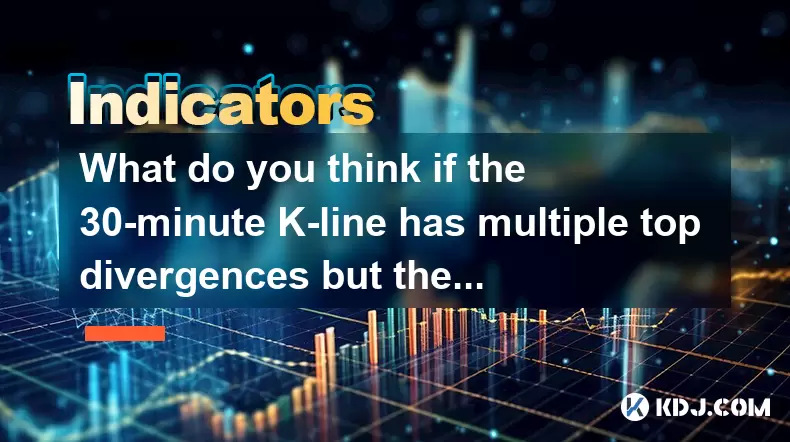
Understanding Divergence in Cryptocurrency Trading
In the world of cryptocurrency trading, divergence is a key technical analysis concept used to predict potential reversals. A top divergence occurs when the price makes a higher high, but an oscillator like the Relative Strength Index (RSI) or Moving Average Convergence Divergence (MACD) makes a lower high. This signals weakening momentum and a possible reversal.
When observing the 30-minute K-line chart, seeing multiple top divergences may suggest that short-term selling pressure is increasing. However, if the daily line remains bullish, it indicates that long-term buyers are still in control. This discrepancy between timeframes can confuse traders, especially those who rely on both short-term and long-term charts for decision-making.
Why Multiple Top Divergences on the 30-Minute Chart May Occur
On a 30-minute chart, multiple top divergences often reflect short-term exhaustion of buying power. In highly volatile markets like cryptocurrencies, rapid price surges can trigger profit-taking or panic selling among retail traders. These actions create temporary bearish signals even when the broader trend remains intact.
For instance, during a strong uptrend, each rally might be followed by a pullback where indicators like RSI show overbought conditions and then form a bearish divergence. Yet, these pullbacks don't necessarily reverse the overall trend. Instead, they serve as consolidation phases before another leg up.
It's crucial to remember that divergence alone is not a confirmation signal; it merely suggests a potential change in direction. Traders must combine it with other tools such as volume analysis, support/resistance levels, or candlestick patterns for better accuracy.
The Role of the Daily Chart in Confirming Trend Health
While the 30-minute chart shows intraday fluctuations, the daily chart offers a broader perspective. If the daily line continues to rise, it implies that large institutional players or long-term investors are accumulating assets despite short-term corrections.
A rising daily line usually reflects sustained demand, stronger fundamentals, or positive news sentiment. Even if several smaller timeframes like the 1-hour or 30-minute charts exhibit bearish signs, the higher timeframe dominance can override these signals.
This phenomenon is commonly seen during bull market corrections, where dips are bought aggressively. As long as key moving averages like the 50-day or 200-day EMA remain supportive, and volume doesn’t collapse, the uptrend is considered healthy.
How to Trade When Short-Term Divergences Conflict With Long-Term Trends
Trading in such conflicting environments requires careful strategy planning:
- Identify the dominant trend using daily and weekly charts
- Use 30-minute divergences as potential entry points for trades aligned with the larger trend
- Monitor volume changes across timeframes to assess conviction behind price moves
If you're a swing trader, consider entering long positions after a confirmed pullback supported by the daily trend. Conversely, scalpers might use the 30-minute divergences to take short-term profits or initiate small short positions while keeping tight stop losses.
Here’s how you can practically approach this situation step-by-step:
- Analyze the daily chart to confirm the presence of a clear uptrend
- Switch to the 30-minute chart and identify bearish divergences using RSI or MACD
- Wait for a retest of a key support level or a moving average on the daily chart
- Look for reversal candlestick patterns (like hammer, engulfing) on the 30-minute chart
- Enter a long position once price action confirms resumption of the uptrend
- Set a stop loss just below the recent swing low on the daily chart
- Take partial profits at Fibonacci resistance levels or prior highs
Managing Risk in Mixed Signal Environments
Risk management becomes even more critical when there's a conflict between different timeframes. Since divergences on the 30-minute chart can lead to sudden pullbacks, traders should avoid over-leveraging or holding large positions without adequate protection.
Some risk mitigation techniques include:
- Using trailing stops to protect gains during uptrends
- Avoiding countertrend trades unless the setup is extremely strong
- Scaling in and out of positions rather than going all-in at once
- Keeping a risk-reward ratio above 1:2 to ensure profitability over time
Also, pay attention to news events or macroeconomic factors that could influence the market. Sometimes, what appears as a technical divergence may actually be a reaction to external developments like regulatory announcements or macroeconomic data releases.
Frequently Asked Questions
Q: Can divergence always predict a trend reversal accurately?
No, divergence is not a guaranteed predictor of trend reversals. It highlights weakening momentum but does not provide timing or certainty about when a reversal will occur. Always combine divergence with other confirmation tools.
Q: Should I ignore short-term divergences if the daily trend is strong?
Not necessarily. Short-term divergences can be useful for identifying entry or exit opportunities within the context of the larger trend. They should not be ignored but interpreted carefully alongside higher timeframe signals.
Q: What tools can help confirm divergence signals?
Tools like volume analysis, candlestick patterns, moving averages, and support/resistance zones can help confirm whether a divergence is likely to result in a reversal or just a temporary correction.
Q: How do I differentiate between a real divergence and a false one?
False divergences often occur in choppy or sideways markets. Real divergences tend to appear near major support or resistance areas and are accompanied by decreasing volume or bearish candlestick formations.
Disclaimer:info@kdj.com
The information provided is not trading advice. kdj.com does not assume any responsibility for any investments made based on the information provided in this article. Cryptocurrencies are highly volatile and it is highly recommended that you invest with caution after thorough research!
If you believe that the content used on this website infringes your copyright, please contact us immediately (info@kdj.com) and we will delete it promptly.
- Eurau Stablecoin: Deutsche Bank, Galaxy, and Bafin Approval Usher in New Era
- 2025-07-03 20:30:12
- Solana DEX Volume and Ranking: Riding the Wave to the Top
- 2025-07-03 21:10:20
- BONK ETF Buzz: News, Catalysts, and What's Driving the Meme Coin Mania
- 2025-07-03 21:10:20
- Check Your Change! That 1p Coin Could Be Worth £200k!
- 2025-07-03 21:20:17
- Mosman Oil's Vecta Termination: A Drilling Programme Debrief
- 2025-07-03 20:30:12
- HYPE Price Forecast: Will It Reach $50 by July 2025?
- 2025-07-03 21:20:18
Related knowledge
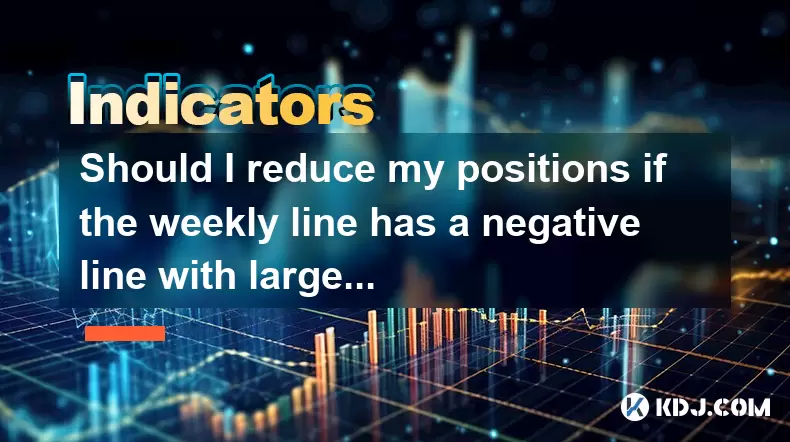
Should I reduce my positions if the weekly line has a negative line with large volume + the daily line falls below the middle Bollinger line?
Jul 01,2025 at 10:50pm
Understanding the Weekly Line with Negative Candle and Large VolumeWhen analyzing cryptocurrency charts, a weekly line that forms a negative candle accompanied by large volume is often interpreted as a strong bearish signal. This pattern suggests that institutional or large traders are actively selling their positions, which can foreshadow further price...
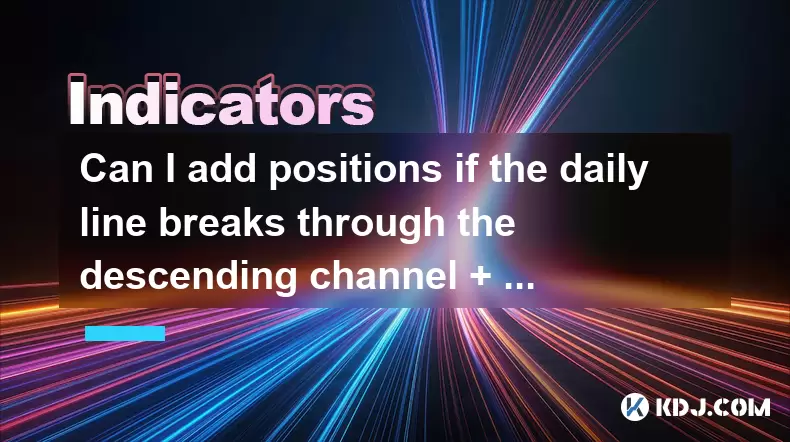
Can I add positions if the daily line breaks through the descending channel + the 30-minute moving average is in a bullish arrangement?
Jun 30,2025 at 11:00pm
Understanding the Descending Channel BreakoutWhen a daily line breaks through a descending channel, it indicates a potential shift in market sentiment from bearish to bullish. A descending channel is formed by drawing two parallel trendlines, where the upper trendline connects the lower highs and the lower trendline connects the lower lows. A breakout o...
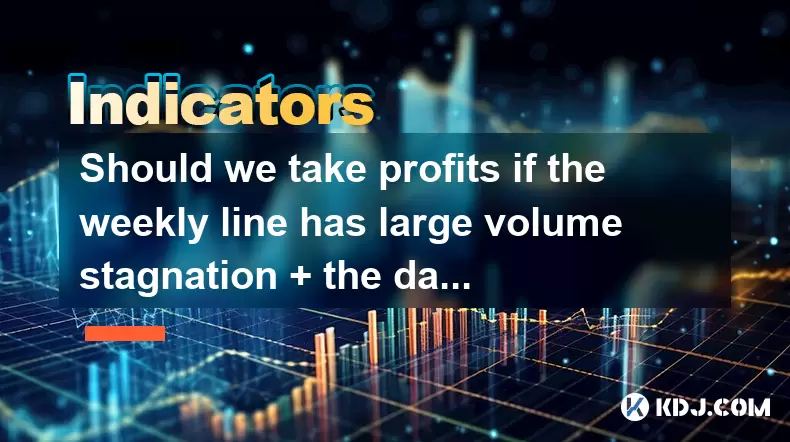
Should we take profits if the weekly line has large volume stagnation + the daily RSI top divergence?
Jul 01,2025 at 05:22pm
Understanding Weekly Volume Stagnation in Cryptocurrency TradingIn cryptocurrency trading, weekly volume stagnation refers to a situation where the total trading volume over a week remains relatively flat or shows no significant increase despite price movements. This phenomenon can indicate that institutional or large traders are not actively participat...
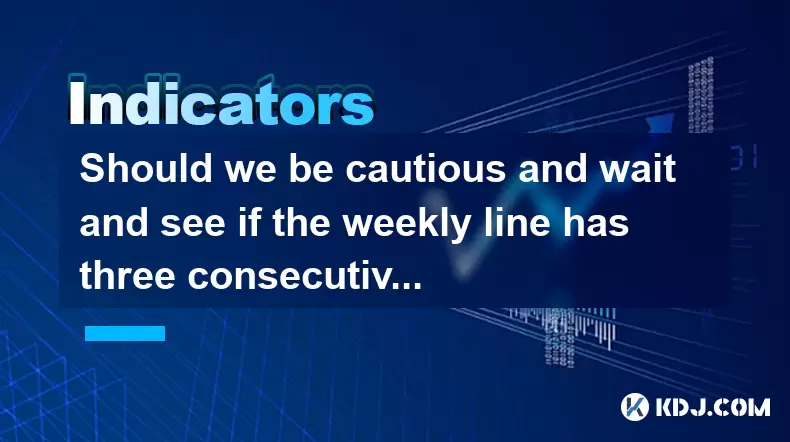
Should we be cautious and wait and see if the weekly line has three consecutive Yin lines + the daily MACD green column enlarges?
Jul 01,2025 at 12:42am
Understanding the Weekly Three Consecutive Yin Lines PatternIn technical analysis, three consecutive Yin lines on a weekly chart indicate a strong bearish trend. Each Yin line represents a week where the closing price is lower than the opening price, signaling consistent selling pressure. When this pattern appears three times in succession, it often sug...
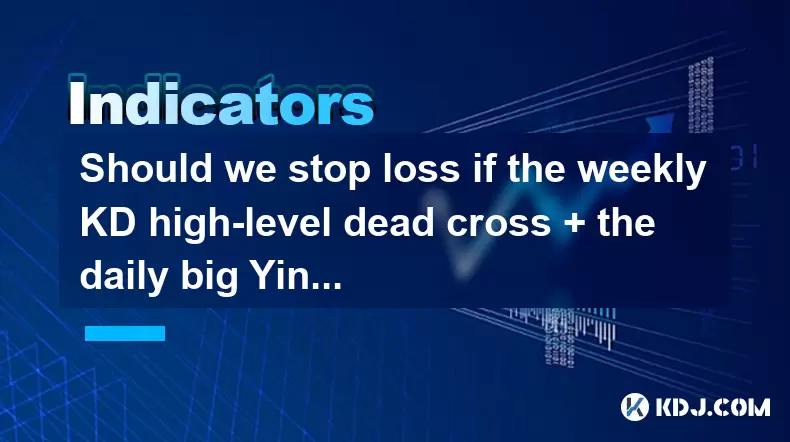
Should we stop loss if the weekly KD high-level dead cross + the daily big Yin line breaks?
Jul 01,2025 at 09:49pm
Understanding the Weekly KD High-Level Dead CrossIn technical analysis, KD (K-D indicator) is a momentum oscillator that helps traders identify overbought or oversold conditions in the market. The weekly KD high-level dead cross occurs when both the K-line and D-line are above 80 (indicating overbought territory), and the K-line crosses below the D-line...
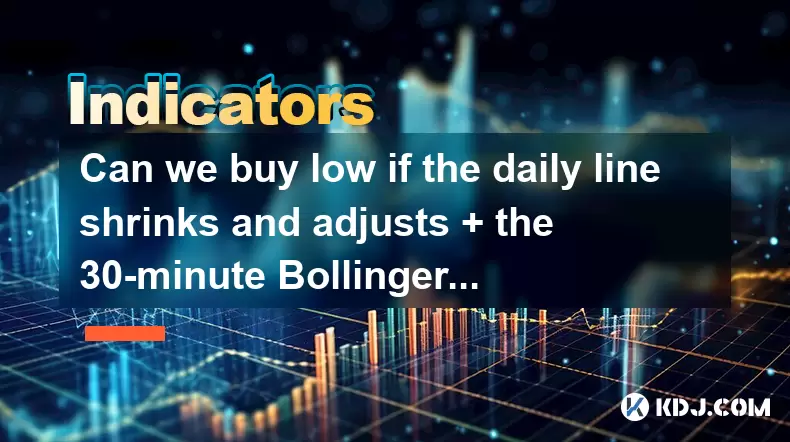
Can we buy low if the daily line shrinks and adjusts + the 30-minute Bollinger lower rail supports?
Jul 02,2025 at 12:29pm
Understanding the Technical Indicators: Bollinger Bands and Daily Line ShrinkingIn cryptocurrency trading, technical indicators play a critical role in identifying potential entry and exit points. The Bollinger Bands consist of a moving average (typically 20 periods) and two standard deviation lines plotted above and below it. When prices touch or appro...

Should I reduce my positions if the weekly line has a negative line with large volume + the daily line falls below the middle Bollinger line?
Jul 01,2025 at 10:50pm
Understanding the Weekly Line with Negative Candle and Large VolumeWhen analyzing cryptocurrency charts, a weekly line that forms a negative candle accompanied by large volume is often interpreted as a strong bearish signal. This pattern suggests that institutional or large traders are actively selling their positions, which can foreshadow further price...

Can I add positions if the daily line breaks through the descending channel + the 30-minute moving average is in a bullish arrangement?
Jun 30,2025 at 11:00pm
Understanding the Descending Channel BreakoutWhen a daily line breaks through a descending channel, it indicates a potential shift in market sentiment from bearish to bullish. A descending channel is formed by drawing two parallel trendlines, where the upper trendline connects the lower highs and the lower trendline connects the lower lows. A breakout o...

Should we take profits if the weekly line has large volume stagnation + the daily RSI top divergence?
Jul 01,2025 at 05:22pm
Understanding Weekly Volume Stagnation in Cryptocurrency TradingIn cryptocurrency trading, weekly volume stagnation refers to a situation where the total trading volume over a week remains relatively flat or shows no significant increase despite price movements. This phenomenon can indicate that institutional or large traders are not actively participat...

Should we be cautious and wait and see if the weekly line has three consecutive Yin lines + the daily MACD green column enlarges?
Jul 01,2025 at 12:42am
Understanding the Weekly Three Consecutive Yin Lines PatternIn technical analysis, three consecutive Yin lines on a weekly chart indicate a strong bearish trend. Each Yin line represents a week where the closing price is lower than the opening price, signaling consistent selling pressure. When this pattern appears three times in succession, it often sug...

Should we stop loss if the weekly KD high-level dead cross + the daily big Yin line breaks?
Jul 01,2025 at 09:49pm
Understanding the Weekly KD High-Level Dead CrossIn technical analysis, KD (K-D indicator) is a momentum oscillator that helps traders identify overbought or oversold conditions in the market. The weekly KD high-level dead cross occurs when both the K-line and D-line are above 80 (indicating overbought territory), and the K-line crosses below the D-line...

Can we buy low if the daily line shrinks and adjusts + the 30-minute Bollinger lower rail supports?
Jul 02,2025 at 12:29pm
Understanding the Technical Indicators: Bollinger Bands and Daily Line ShrinkingIn cryptocurrency trading, technical indicators play a critical role in identifying potential entry and exit points. The Bollinger Bands consist of a moving average (typically 20 periods) and two standard deviation lines plotted above and below it. When prices touch or appro...
See all articles

























































































